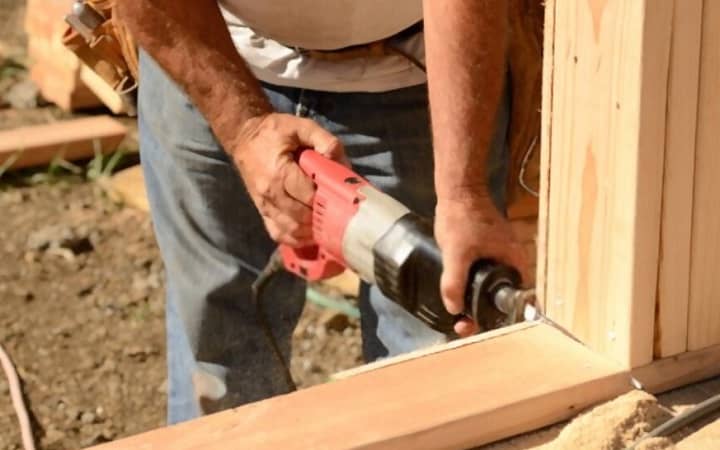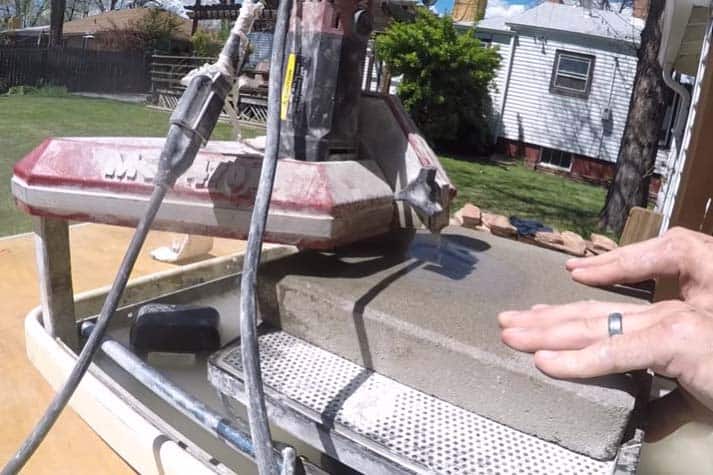A manual or power saw is essential for every home for small fixing and renovation projects. While most saws are built for accommodating large cuts, the reciprocating saw specializes in both large and small cuts.
It comes with a compact surface and thin blade suitable for making straight lines and decorative cuts. The question is how to cut straight with a reciprocating sawquickly and accurately. Once you know the straight line in the creating process with the reciprocating saw, you will love its accuracy and power unmatched to other saws.
How to Cut Straight with A Reciprocating Saw
The process of creating a straight line is almost identical to other saw uses for straight cuts. You will have to mark the cutting line with measuring tape and a pencil. Then align the saw blade correctly with the cutline and hold the reciprocating saw against your stomach for proper operation.
But it is easier said than done.
So, we will discuss the entire process in a detailed and step by step manner.
Preparing Straight Lines Horizontally
A table saw is ideal for working with large woodblocks. However, a reciprocating saw will also yield impressive straight lines if appropriately handled.
- When you use a reciprocating saw with a sharp blade for square cuts, you almost guarantee to get clean and precise cuts. At first, use clamps to lock cutting material properly right at the edge of the platform. You might use C-clamp to hold the material securely along the platform edge. Ensure that the cutting material is slightly outside the platform so that the blade can move without obstacles.
- Now count the distance between the material and saw a fence. Remember that you will have to calculate the area that the saw foot is covering. For instance, you will have to cut between the saw rail and guard if your reciprocating saw has ½” distance between the saw blade and fence.
- The clamping of the working material is essential because it reduces the vibration and pressure applied to it. Thus, you will get more accurate cuts. If the working material moves frequently or vibrates due to the saw blade, you will get inaccurate and uneven cuts.
- You will find that the blade of the reciprocating saw rests on its head on the surface. Make sure the foot of the saw is set right at the head. The reciprocating saw foot position will actually work as a guide for the cutting session.
- When you perform the cut, ensure that the saw foot faces the fence rail properly and is located right at the edge. It will yield the best cutting outcome for straight lines.
- When you apply pressure with the saw blade on the cutting material for straight cuts, ensure that the saw foot is flat. It is essential for the accuracy of the straight lines.
This way, you can prepare the square cuts on a horizontal surface. Also, you will have to outline the cut using a pencil and measuring tape.
Preparing Straight Lines Vertically
The logic and procedure to cut the working material on a wall or partitions in the vertical position are almost identical to horizontal cuts, with a few exceptions.
Firstly, you will need screws to attach the reciprocating saw rail with the adjacent wall instead of the C-clamps. Make sure you have measured the cutting line properly before you actually approach the real cut.
You can use the reciprocating saw to make straight lines on various materials following the same approach and rules.
Some Extra Tools to Help the Straight Cut Better with The Reciprocating Saw
Undoubtedly, a reciprocating saw promises to yield the best straight line cutting outcome for you. But the use of the following tools with your reciprocating saw will make the process effortless and fun.
- Anti-vibrating handles: It does what the name suggests- the handles will reduce the motor and blade’s vibration while square cuts. It also reduces hand fatigue and may even come with a soft grip for comfortable handling for hours. Some will also feature anti-slip gripping for wet conditions.
- LED light: The LED lighting will enhance the visibility of your working piece. Most reciprocating saws will come with one or two LED lights. It illuminates the working surface and lets you operate the saw blade with safety and accuracy.
- Pivoting shoe: it is a flexible tool. It is a simple tool that you run along the working surface to find out any uneven spots. You can adjust its length and quickly find the rough site for the best straight-line output with the saw. Its adjustability means it is workable on a vertical and horizontal position in various angles.
- Variable speed: A reciprocating saw trigger with variable speed is a boon for plumbers and woodworkers. It lets you control the speed to suit the project requirement. So, you are at liberty to choose the precise speed for effortless square cuts.
- Dust collection hose: Since you will be working closely with the cutting material and reciprocating saw, the sawdust can fly into your eyes. Also, it quickly transforms the workplace into a dirty one. Therefore, if possible, attach a vacuum with the saw to collect the dust through the hose. It will also enhance the visibility resulting in higher accuracy.
Safety Tips for Reciprocating Saw
When you work with the reciprocating saw, at no point shouldyou remove your gloves and safety goggles. Also, wear hearing protection since the saw blade will produce sound decibels well above the standard level.
Once you have completed the cutting, allow the blade to rest and cool down before touching it. It helps the blade to minimize the heat generated from the friction. Also, use lubrication if need be for smooth operation on sturdy materials. It will help the edge retain its sharpness for a longer period.
Conclusion
You see that cutting a straight line with the reciprocating saw isn’t as tough as it seems at first. Thereby, it is recommended that you follow this in-depth instruction on how to cut straight with a reciprocating saw for the best outcomes.
You might also use a table saw, or miter saw for accurate and precise straight lines if you don’t have the reciprocating saw. We will bring a separate tutorial on using these two saws for vertical and horizontal successive line applications.


